Potrebujeme váš súhlas na využitie jednotlivých dát, aby sa vám okrem iného mohli ukazovať informácie týkajúce sa vašich záujmov. Súhlas udelíte kliknutím na tlačidlo „OK“.
ASTM F2747-10
Standard Guide for Construction of Sand-based Rootzones for Golf Putting Greens and Tees (Withdrawn 2019)
Automaticky preložený názov:
Štandardné Príručka pre stavebníctvo Piesok báze Rootzones pre Golf putting greeny a Tees
NORMA vydaná dňa 1.7.2010
Informácie o norme:
Označenie normy: ASTM F2747-10
Poznámka: NEPLATNÁ
Dátum vydania normy: 1.7.2010
Kód tovaru: NS-54469
Počet strán: 11
Približná hmotnosť: 33 g (0.07 libier)
Krajina: Americká technická norma
Kategória: Technické normy ASTM
Kategórie - podobné normy:
Anotácia textu normy ASTM F2747-10 :
Keywords:
athletic field, golf, green, natural turf, putting green, sand, soil, sports field, sports turf, tee, turf, turfgrass, ICS Number Code 97.220.10 (Sports facilities)
Doplňujúce informácie
| Significance and Use | ||||||||||||||||||||||||||||||||||||||||||||
|
A dense, uniform, smooth and vigorously (or healthy) growing natural turfgrass golf green or tee provides the ideal and preferred putting or teeing surface for golf. Sand is commonly used to construct high performance putting green and tee rootzone systems. Sand is chosen as a primary construction material due to its compaction resistance and improved drainage and aeration compared to other soil materials. A loamy soil that may provide a more stable surface and enhanced growing media compared to sand under optimal or normal conditions will quickly compact and deteriorate in condition if used in periods of excessive soil moisture, such as during or following a rain event. A properly constructed sand-based rootzone on the other hand will resist compaction even during wet periods. Even when compacted, sands will retain an enhanced drainage and aeration state compared to native soil rootzones under the same level of traffic. As such, sand-based rootzones are more conducive to providing an all-weather type of putting or teeing surface. Once compacted, sands are also easier to decompact with the use of mechanical aeration equipment. Properties of both the soil and grass plants must be considered in planning, constructing, and maintaining a high quality putting green or tee installation. Turfgrasses utilized must be adapted to the local growing conditions and be capable of forming a thick, dense, turf cover at the desired mowing height. Unvegetated sand is not inherently stable and therefore it is imperative that grasses are utilized to withstand the rigors of play. Sand does however have incredible load bearing capacity and if a dense, uniform turf cover is maintained the sand-based system can provide a firm and uniform playing surface. A successful sand-based rootzone system is dependent upon the proper selection of materials to use in the project. The proper selection of sand, organic amendments, soil, and gravel is of vital concern to the performance of the system. This standard guide addresses these issues. During construction, consideration should be given to factors such as the physical and chemical properties of rootzone materials, surface and internal drainage as well as stones and other debris. Maintenance practices that influence playability include mowing, irrigation, fertilization, and mechanical aeration. These factors are addressed in other standards (Guides F2060, F2269, and F2397). Those responsible for the design, construction, or maintenance, or a combination thereof, of golf putting greens and tees will benefit from this guide. A successful project development depends upon proper planning and upon the selection of and cooperation among design and construction team members. A sand-based putting green/tee rootzone project design team should include a golf course architect/designer, an agronomist or soil scientist, or both, and an owner’s design representative. Additions to the team during the construction phase should include an owner’s project manager (often an expansion of role for the owner’s design representative), an owner’s quality control agent (often the personnel that is employed in advance with the intent of becoming the finished project’s golf course superintendent/greenskeeper), an owner’s testing agent (often an expansion of roles for the project’s agronomist/soil scientist) and the contractor. Planning for projects must be conducted well in advance of the intended construction date. Often this planning requires numerous meetings to create a calendar of events, schedule, approvals, assessments, performance criteria, quality control (QC) protocols, material sourcing, geotechnical reports, and construction budgets. Note 1—Other specifications on soils for golf green and putting green construction that have been published were considered during the development of this standard. |
||||||||||||||||||||||||||||||||||||||||||||
| 1. Scope | ||||||||||||||||||||||||||||||||||||||||||||
|
1.1 This guide covers techniques that are appropriate for the construction of high performance sand-based rootzones for golf greens and tees. This guide provides guidance for the selection of materials, including soil, sand, gravel, peat, etc., for use in designing and constructing sand-based golf turf rootzones. 1.2 Decisions in selecting construction and maintenance techniques are influenced by existing soil types, climatic factors, level of play, intensity and frequency of use, equipment available, budget and training, and the ability of management personnel. 1.3 This guide offers an organized collection of information or a series of options and does not recommend a specific course of action. This document cannot replace education or experience and should be used in conjunction with professional judgment. Not all aspects of this guide may be applicable in all circumstances. This guide is not intended to represent or replace the standard of care by which the adequacy of a given professional service must be judged, nor should this document be applied without consideration of a project’s many unique aspects. The word “Standard” in the title of this document means only that the document has been approved through the ASTM consensus process. 1.4 The values stated in SI units are to be regarded as the standard. The values given in parentheses are for information only. 1.5 This standard does not purport to address all of the safety concerns, if any, associated with its use. It is the responsibility of the user of this standard to establish appropriate safety and health practices and determine the applicability of regulatory limitations prior to use. |
||||||||||||||||||||||||||||||||||||||||||||
| 2. Referenced Documents | ||||||||||||||||||||||||||||||||||||||||||||
|
Podobné normy:
Historická
15.5.2009
Historická
1.8.2012
Historická
1.4.2011
Historická
1.1.2007
Historická
15.3.2009
Historická
1.7.2012
Odporúčame:
Aktualizácia technických noriem
Chcete mať istotu, že používate len platné technické normy?
Ponúkame Vám riešenie, ktoré Vám zaistí mesačný prehľad o aktuálnosti noriem, ktoré používate.
Chcete vedieť viac informácií ? Pozrite sa na túto stránku.


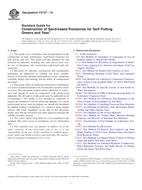
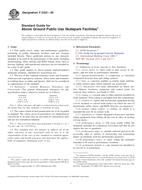 ASTM F2334-09
ASTM F2334-09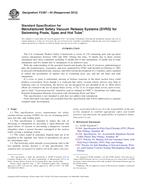 ASTM F2387-04(2012)..
ASTM F2387-04(2012)..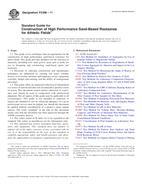 ASTM F2396-11
ASTM F2396-11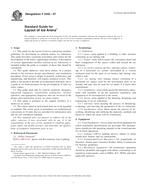 ASTM F2442-07
ASTM F2442-07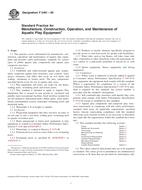 ASTM F2461-09
ASTM F2461-09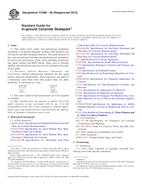 ASTM F2480-06(2012)..
ASTM F2480-06(2012)..
 Cookies
Cookies
